The Paknam Incident of 1893
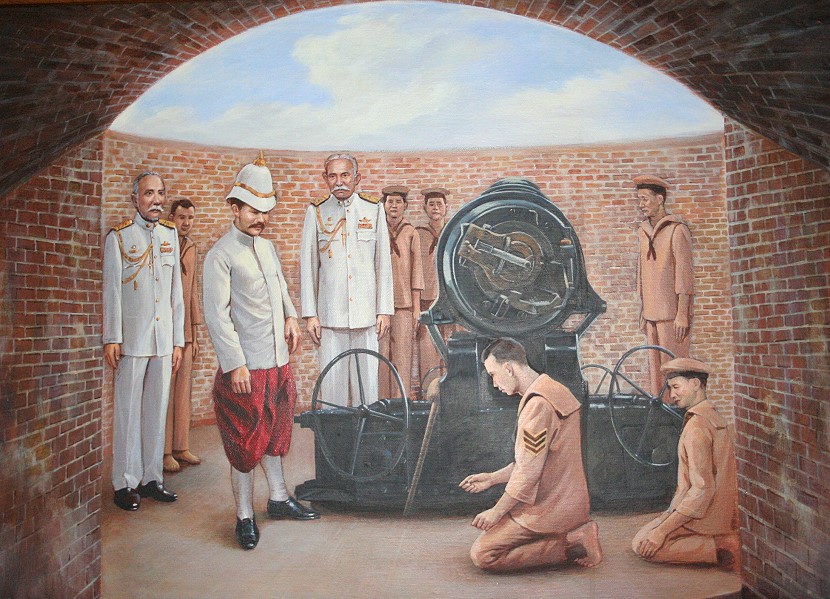
During the second half of the nineteenth century, countries in Southeast Asia were under pressure and threat from Western powers. With their mighty fleets, England and France were able to seize almost all the autonomous states in this part of the world. Thailand was the only kingdom in the Indochina Peninsula that managed to survive as an independent state amid the colonial expansion of the Wet. The Thais were more fortunate than their neighbours in that Kings Nang Klao, Mongkut and Chulalongkorn, as well as the elite, realized that they needed a cautious foreign policy in dealing with Western countries, especially England and France.
Laos and Cambodia had been Thai vassal states since the days of Ayutthaya, though they occasionally tried to secede. Then in the mid-19th century, France, with Vietnam under its control, started to exert more and more power over Cambodia to compete with England and to establish dominance over the Mekong, which would serve as a route from Yunnan to the sea. The French sent troops into territories on the left bank of the Mekong River.
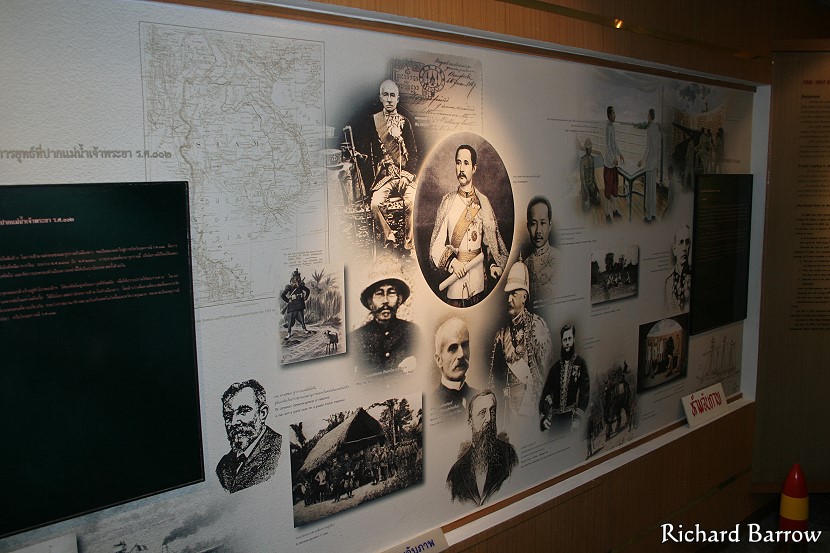
After seizing the outlying regions of Cambodia in 1863, the French turned their attention to Laos, which was a Thai vassal state. The Thai government was greatly concerned over border problems because the boundaries of the Lao states were not fixed. Moreover, they were of dual allegiance as their rulers acknowledged both Thai and Vietnamese suzerainty. Since neither of the two countries had exclusive control over these states, the French were able to lay claim over Sipsong Chu Thai and Hua Phan Thang Hok as the successor to Vietnam’s rights over them.
The French pretext for exerting their influence and advancing into Laos, which eventually led to the 1893 crisis, stemmed from the activities of the Ho raiders (fugitive rebels from China from 1875 to 1887). In suppressing the Ho, Bangkok established suzerainty over Laos states with military expeditions and supervision of their civil administration.
At one time, King Chulalongkorn sent a large army equipped with modern weapons into Laos to crush the rebels. The French in the meantime were suppressing the Ho in Tonkin. They sent troops into Laos on the pretext that they were in pursuit of the Ho who fled there. A dispute erupted with France over the Lao border and escalated to the extent that it led to the engagement, or 1893 crisis, at Paknam.
The Period Prior to the Engagement
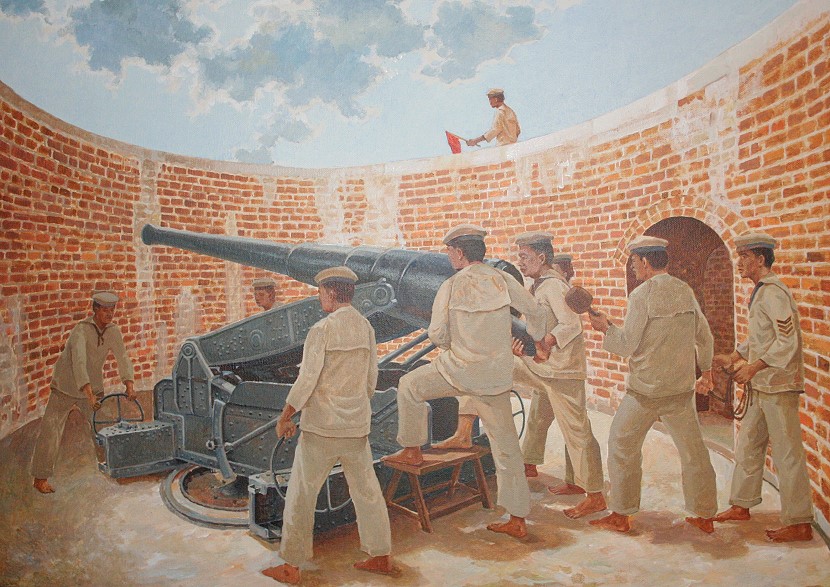
In 1889 and 1892 Monsieur Auguste Pavie was appointed consul and then minister to Bangkok respectively. He used military pressure in an effort to force the Thais to agree that territories from Vietnam to the Mekong were under French control, but they refused. On March 14, 1893, the Lutin, a French gunboat, arrived and moored in the Chao Phraya in front of the French legation. The reason given for its presence was to protect the interest of French nationals in Thailand and it was said that the visit would exceed seven days. However, it refused to leave.
A week passed. Another ship, the Comete, came to bring food supplies to the crew of the Lutin and prepared for naval action.
On April 10, 1893, King Chulalongkorn went to inspect Chulachomklao fort.
Towards the end of April 1893, the king ordered the navy to make preparations for defense against the encroachment of Thai sovereignty. Phraya Chonlayut Yothin, vice commander-in-chief of the naval forces, was made director of the defence of Paknam. He devised a plan of action to halt the passage of French warships at the mouth of the Chao Phraya River as follows:
1. Old guns at Chulachomklao and Phisua Samut forts were to be replaced by modern 6 inch Wigger Armstrong guns. Telephone lines were ordered to be laid between the forts for communications. Preparations were made to halt the entry of the French warships.
2. Nine war vessels were put on the alert to the North of Chulachomklao Fort. Most of them were either antiquated or just river steamers. Only two were up-to-date: The Makut Rachakuman and the Muratha Wasitsawat.
3. Barriers were to be placed across the mouth of the Chao Phraya, such as sinking boats loaded with stone to narrow the channel, and creating minefields.

Later on, other powers sent in ships to protect their interests, such as the Sumbawa of the Netherlands and the Wolf of Germany. Towards the end of June 1893, the following arrangements were made to defend the capital, including areas outside the city wall: On duty was a regular army 2,600 strong, with a reinforcement force of 1,000 men, 34 howitzers, and 9 miscellaneous big guns. Reinforcements and modern weapons were sent to strategic places such as Rayong, Laem Singh (Chanthaburi), Laem Ngop (Trat) and Ko Kong (Trat).
On July 1, 1893, England send the Pallas from Singapore. The ship moored at the bar to protect British nationals and their interests, without any sign that it would give assistance to the Thais.
On July 4, 1893, King Chulalongkorn made a private visit. He observed the howitzer firing practice.
On July 10, 1893, the French asked that the sloop Inconstant, and the gunboat Comete be allowed to cross the bar at the mouth of the river. Though the Thais refused entry, the French did not listen.
The Engagement at Paknam on July 13, 1893
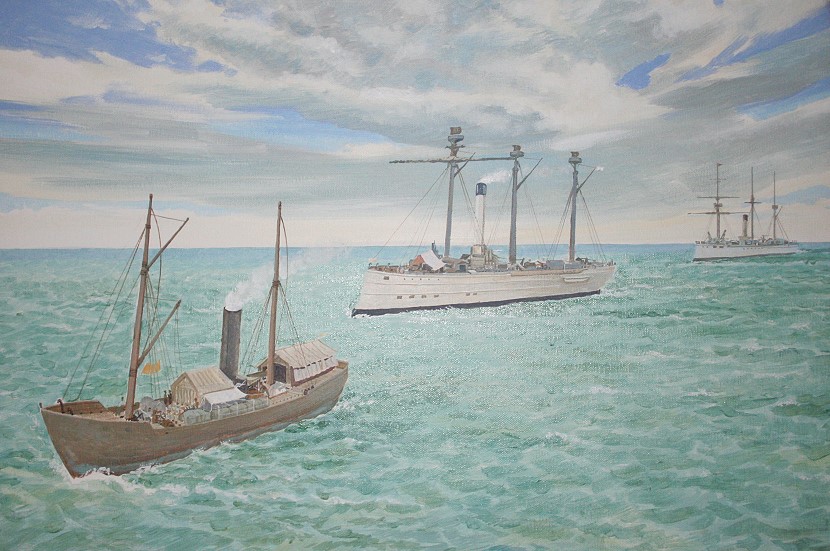
The Makut Ratchakuman and the Narubent Butri were getting ready to receive the Archduke of Austria. On hearing that he had not yet arrived, and that the latest news was that two French gunboats had arrived at the bar, Phraya Chonlayut Yothin ordered a full alert. Ships were positioned along the Paknam defence line: the Makut Ratchakuman, the Narubent Butri and the Thun Kramon on the west of the channel, the Muratha Wisitsawat and the Han Hak on the east. One more cargo boat was sunk at the defence line. More mines were laid, a total of only 16.
The order was that should a French ship enter the defence line, Chulalongkorn Fort would fire three warning shots. If it did not stop, a fourth shot would be fired and the boats could start firing.
When the French fleet consisting of the J.B. Say, a pilot boat, the Inconstant, and the Comete, arrived at the Paknam bar. Mr. Jackson, a Thai pilot of Britsh nationality, boarded the J.B. Say. Captain Will, a Thai port inspector of German nationality who took the Akkarat Woradet to Paknam, bordered the Inconstant to tell Commander Borey not to proceed up the river.
Captain Edward received orders from the commander of the Pallas, a British ship moored in the Paknam area, to board the Inconstant with th message that the French minister ordered French boats to drop anchor at thebar. The French commander refused to obey. All of the officers left except Jackson, who had to pilot the ship.
Captain Will raised the signal flag for Chulachomklao Fort to be on full alert.
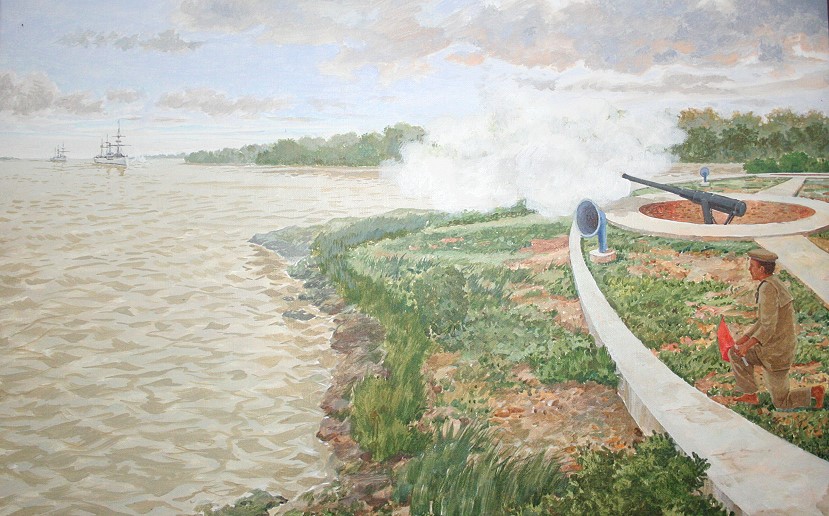
At 6.15 p.m. it stopped raining. From the fort, French ships could be seen passing the lighthouse. Everyone was ordered to take battle stations.
At 6.30 p.m. the French ships reached the Black Buoy. Chulachomklao Fort fired two warning shots. The Thais did not want to be regarded as the party that started the war.
When the warning shots had no effect, a third shot was fired with live ammunition to fall in front of the ship as a warning. Another shot was fired to fall at the front of the ship too.
The French ships moved on, flying the French flag, an indication that they took battle stations. Then they started firing at Chulachomklao Fort. The fort began training guns on the target. The French ships did not exchange fire as they were quite a distance away. Later, the J.B. Say was hit, and the Inconstant was, too, with its davits broken. There were casualties.
At 6.43 p.m. the French started firing back.
At 6.50 p.m. the French ships approached the defence line. The Makhut Ratchakuman and the Muratha Wasitsawat fired at the French ships. A boat launched an explosive mine but it missed the target.
The J.B. Say was hit by cannon balls and ran aground at Laem Lamphu Rai.
The Inconstant and the Comete moved on and dropped anchor in front of the French Legation in Bangkok.
The Aftermath of the Paknam Crisis
On July 16, 1893, twelve French warships were sent to blockade the Gulf of Thailand.
On July 29, 1893, the French occupied Chantaburi to force the Thais to sign a peace treaty requiring that Thailand do the following: Cede Sipsong Chu Thai and territory on the left bank of the Mekong. They also had to pay an indemnity.
In 1903 the French pulled their troops out of Chantaburi and went on to occupy Trat.
During this time, Western nations that had dealings with Thailand such as England, Germany, and the Netherlands, were all anxious about their interests. They sent warships to keep a close watch on the situation. The French therefore did not dare to be rough.
In 1906 the French pulled all their troops out of Thai territory.
The Importance of the 1893 Engagement
The exchange of gunfire between the forts and Thai war boats and French gunboats on July 13, 1893 was very brief and caused little damage in terms of life and property. However, it had several immediate outcomes with long lasting effects as follows:
- The start of negotiations between Thailand and France.
- The French stopped using force in the long disputes about territories on the left bank of the Mekong.
- Territorial loss of about one third of the kingdom to France on three occasions.

